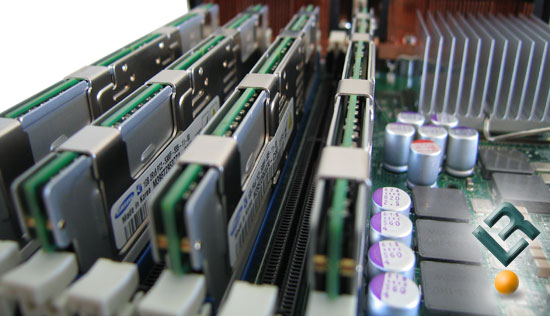Intel’s Mighty Dual Xeon Beast – V8 Platform Preview
Final Thoughts and Conclusions

After using the Intel Workstation Board S5000XVN with a pair of yet-to-be-released Xeon X5365 ‘Clovertown’ processors, its safe to say that this is by far the fastest system that we have ever built or used. The ‘V8’ incarnation that Intel showed off is not the average grocery getter, it is the muscle cars of computing. This system is reserved for those power users that don’t care about how many Watts of power are consumed or how expensive this system will end up being, as this is about having the best performance and nothing more.
Having eight cores increased performance dramatically on multi-threaded applications where all of the cores can be put to use. For single-threaded use this system is no different than that Core 2 Duo that is more than likely already inside your system as long as it’s running 3GHz with a 1333MHz FSB of course. The future of computing is headed towards multi-threaded applications, so down the road support for eight cores shouldn’t be a big deal or even shocking.
While ‘V8’ isn’t a product line that Intel offers, it would be interesting to see if they come out with a workstation board that has two PCI Express x16 slots for Tesla computing now that Intel has to get chummy with NVIDIA after the whole AMD/ATI ordeal. If they come out with a motherboard that supports two GPU’s as well as the upcoming 45nm quad-core processors that we showed you a couple weeks ago, a ‘V8’ system might just be the ultimate system for gamers and enthusiasts alike for some time to come unless AMD can counter it with their FASN8 platform.
When the upcoming AMD FASN8 with quad-core CPUs on K10 micro-architecture comes out to replace the QuadFX with dual-core CPUs things might get interesting, but only if AMD can increase the clock frequency on their upcoming processors. At Computex just a couple weeks ago, we looked and couldn’t find any AMD ‘Barcelona’ processors over 2GHz on the current processor stepping. Intel seems to have something to counter every move AMD makes and by the time AMD’s FASN8 comes to market Intel will have 45nm Penryn quad-core processors that feature improvements like Intel’s SSE4 instruction set. SSE4 is not just another new instruction set as it will really help multimedia programmers by offering better compression, which will improve the size of video files. This is a big deal with how fast computer users are moving into multimedia applications.
What’s next for Intel? The beat goes on with 32nm silicon processor technology that will ramp up after Nehalem is out the door. After the Penryn and Nehalem 45nm processors are in production get used to hearing about Westmere and Sandy Bridge, which make up Intel’s 32nm family!
Legit Bottom Line: Without even lauching a product line, Intel has been able to make AMD’s QuadFX platform look like weak sauce thanks to their ‘V8’ demo systems.

Comments are closed.